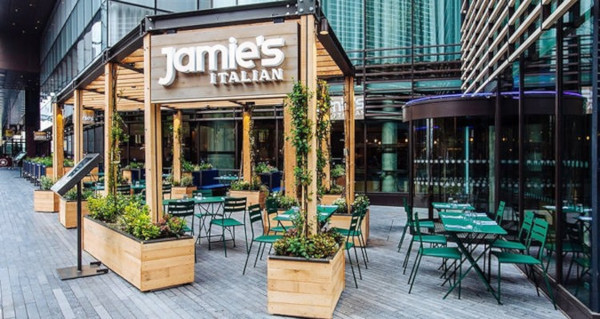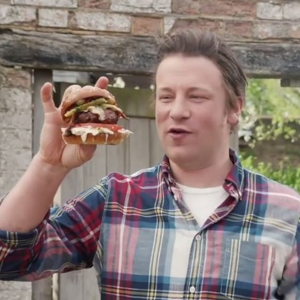The restaurant empire of Jamie Oliver, the perky, at times hyperenthusiastic British celebrity Chef who made cooking and food cool for younger people over the last 20 years, has hit the skids, and that’s a shock to fans who must have thought he was was ‘too cool to fail’…
 One of the Jamie’s Italian restos that closed earlier this week, under bankruptcy
One of the Jamie’s Italian restos that closed earlier this week, under bankruptcy
‘administration’ having racked up more than (UK)70 million in debt.
Oliver’s restaurants (lost UK)£17 million in 2017 alone, and went on to lose more than (UK)£70 million in 2018 to lose big time last year, when he pumped nearly (UK)£13 million of his own money into the company. But it was too little, too late. And more than 600 people lost their jobs.
The Jamie Oliver phenomenon
There’s never been anyone quite like him before – except maybe the quirky, bouncy, boozy Graham Kerr, known as The Galloping Gourmet, who (along with the likes of Julia Child) is hailed as a founder of the modern TV Cooking Show. Like Kerr, Oliver trades on his boyish charm and enthusiasm for food. Unlike Kerr, he eschews over-rich, decadent cuisine and doesn’t put such a strong emphasis on Alcohol. Instead, he has become a high-profile advocate of healthy eating and sustainable food production. Who would have thought 22 restaurants bearing his name across the UK would suddenly close their doors, under ‘financial administration’?
What happened
Financial ‘administration’ is what the Brits call bankruptcy. How could Jamie’s restos have fallen into the money pit?
In short, this scenario is not a classic example of why it takes more than great food and great service to make a restaurant successful. You also have to adhere to stringent business practices, including the core principle that you start out with adequate capitalization and price your food according to the 30 Percent Rule. That is, the cost of the ingredients for any menu item must not exceed 30 percent of the menu price you set. Otherwise, you won’t make enough money to survive.
“We launched Jamie’s Italian in 2008 with the intention of positively disrupting mid-market dining in the UK High Street, with great value and much higher quality ingredients, best-in-class animal welfare standards and an amazing team who shared my passion for great food and service. And we did exactly that,” Oliver said. And he was under no illusions about the financial realities of the business.
A victim of the Brexit mayhem
But then the Brexit upheaval hit, and the economic uncertainty that came with it adversely effected a wide range of industries and businesses, not the least of which was the mid-market restaurant sector. In fact, a laundry list of other such restos have also closed in the past year or so. Many consumers hardened their fiscal defenses, cutting all unnecessary expenses. Eating out was just one victim of that trend.
Oliver’s Union Jack eateries had already closed when he pumped a final (UK)£3 million of his own money into his empire late last year, and his popular Jamie’s magazine closed last year after a 10-year run.
Could the Oliver empire have survived?
Simon Mydlowski, a partner at law firm Gordons and an expert in the hospitality industry, told the BBC, Jamie’s restos had failed to keep up with changing trends.
“To be successful in this sector you have to be constantly evolving – from the menus and the drinks choice, to the way you engage with customers. […] Faced with higher rent, rising food prices and increased competition, restaurants need a point of difference – it’s no coincidence that smaller brands with the freedom and flexibility to keep things fresh are currently the ones performing well.”
Don’t cry for Jamie, fans
He’s still got his cookbooks and syndicated TV series, and name-branded kitchen ware lines. And his personal fortune, which, according to Spear’s magazine, still tops (UK)£240 million / (US)$304,700,000).
~ Maggie J.

